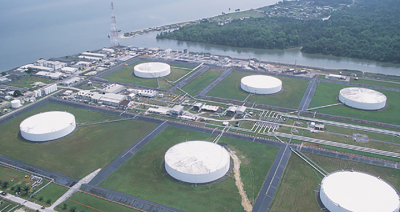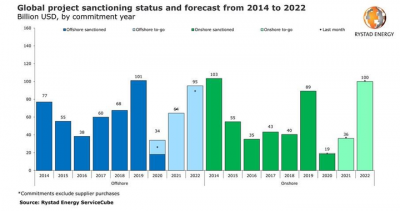Energy transition to transform Asian refining

Energy transition to transform Asian refining
The move away from fossil fuels will cap refinery capacity expansion in Asia-Pacific, but petrochemical demand gives the sector options
Asia-Pacific’s refining capacity growth is set to slow in the long term as the region’s energy transition displaces demand for traditional fuels and as decarbonisation moves up government policy agendas, according to market participants at the Asian Refining and Petrochemicals Summit.
Three long-term trends are driving the outlook for refined product demand in Asia-Pacific that have implications for refining in the region, Harry Ubhi, head of business development and origination at the trading arm of Italy’s Eni, told the conference in mid-March.
In large emerging economies such as India and Indonesia, a rapidly growing middle class will support robust transport fuel demand growth into the 2040s. The opposite will be true for developed economies such as Japan, South Korea, Singapore, Taiwan, Australia and New Zealand, where demand is in long-term structural decline from a combination of ageing populations, high vehicle penetration rates, fuel-efficiency gains and fleet electrification.
In the middle is China, which is transitioning from the first scenario to the second. “From a Chinese perspective, there is still growth, but I think the general view seems to be that, in the early 2030s, Chinese demand for transport fuels will actually drop off and then we will go into a long-term decline,” says Ubhi. Overall, the likelihood is that, from a regional standpoint, fuel demand will grow until the late 2030s and then enter a long-term structural decline.
China’s share of regional refining capacity exceeded 50pc last year for the first time and is set to hit 51.6pc in 2023, according to information provider S&P Global Commodity Insights. Chinese capacity is expected to reach 19.4mn bl/d this year, not far off the government’s target of 20mn bl/d by 2025.
China’s near-term target to reach peak carbon emissions before 2030 means Asia-Pacific’s largest economy and oil consumer “in the next few years will cut a lot of use of fossil fuels”, says Wang Pei, head of research and strategy at Unipec, the trading arm of China’s biggest, refiner Sinopec.
China’s oil and gas sector—including the oil and petrochemical refineries operated by big three state firms, CNPC, Sinopec and Cnooc—accounts for 2pc of global carbon emissions and 4pc of global methane discharge, according to data from local environmental thinktank Sinocarbon Innovation & Investment.
The base-case scenario is that Chinese oil demand will peak at 19.5mn bl/d in 2035, but this could be brought forward to 17.6mn bl/d by 2030 through efforts to achieve the Paris Agreement’s goal to limit global warming to 2°C this century.
A slew of Chinese companies and local governments have announced net-zero pledges in line with Beijing’s ambitious 2060 net-zero goal, including the state oil companies. Cnooc is aiming for 2060, while CNPC and Sinopec are targeting 2050. There is the belief in the corporate sector that carbon neutrality can be achieved by mid-century, according to Wang.
“That means China’s energy transition will be much faster than expected before last year,” says Wang, pointing to how electric vehicle sales now make up one-fifth of all vehicle sales in the country. “In China, most people believe our demand will come to a peak by 2030. That means, for the refining sector, they only have 5-8 years of a golden period left.”
Refining margins to remain robust
Refining margins—which improved year-on-year in 2021 as Asia’s oil demand recovered—have surged since February amid the Russia-Ukraine conflict, which has tightened global oil markets and raised fears of potential shortages of petrol, diesel and other products. The indicative margin in Singapore stood at $25.50/bl last week, up from $17/bl two weeks ago and $14.10/bl four weeks ago, according to Swiss bank Credit Suisse.
Wang says she expects margins to remain robust this year. “This year, I think fuel demand will be healthy around the world and also basically healthy in Asia-Pacific. We see Russia cutting some diesel, ethane and naphtha exports, which will support Asia-Pacific margins. China is experiencing another coronavirus variant, which will put some pressure on oil demand, but for the whole year, the Asia-Pacific margin will be very strong.”
But the long-term trend is for compressed refinery margins. Traditional refineries that are producing transport fuels will be hit the hardest, as they find themselves squeezed by current trends.
“The global refining sector is probably oversupplied in general terms, so I think there is pressure. If you are a traditional refiner, you will be facing challenges in the medium and long-term outlook,” says Ubhi.
Petchems primed
The challenges facing refiners to stay competitive mean integration with petrochemicals will be the best way to hedge for their future. In contrast with refined fuels, demand for petrochemical products is forecast to expand alongside economic and population growth, particularly in emerging markets.
The IEA expects petrochemicals to remain a growth driver for global oil demand through to 2026, with ethane, LPG and naphtha together accounting for 70pc of the projected increase in oil product demand to 2026. At present, most petrochemicals are manufactured as byproducts during crude oil refining, which is primarily focused on the production of transport fuels.
Refineries in China have led Asia-Pacific’s response to this trend over the last several years, with Chinese crude oil-to-chemical (COTC) initiatives driving change in the regional refining footprint. “Looking forward to the next 3-4 years, it is all about COTC. This is across the sector—whether it is the independents or the state-owned companies,” says Ubhi.
Russia-Ukraine fallout
Importers have shunned Russian oil, even though only a handful of countries have formally banned imports, but these self-sanctions are unlikely to be problematic for Asian refiners, which will be able to source alternatives to Russian crude, according to Hisashi Miyagawa, crude oil trading manager at US refiner Phillips 66.
Asian reliance on Russian crude is relatively low, so top regional crude importers—including India, South Korea and Japan—have been relatively unscathed by supply disruptions in the wake of the four week-long conflict and Western sanctions levelled against Moscow’s financial sector, says Miyagawa.
Russian crude accounts for just 3-5pc of overall refinery feedstock imports for major Asian economies, so sourcing alternatives has not been difficult, Miyagawa says, indicating that light, sweet WTI crude would be one of the top options for regional end-users, considering Asian refiners’ extensive and well-established US crude trading network.






